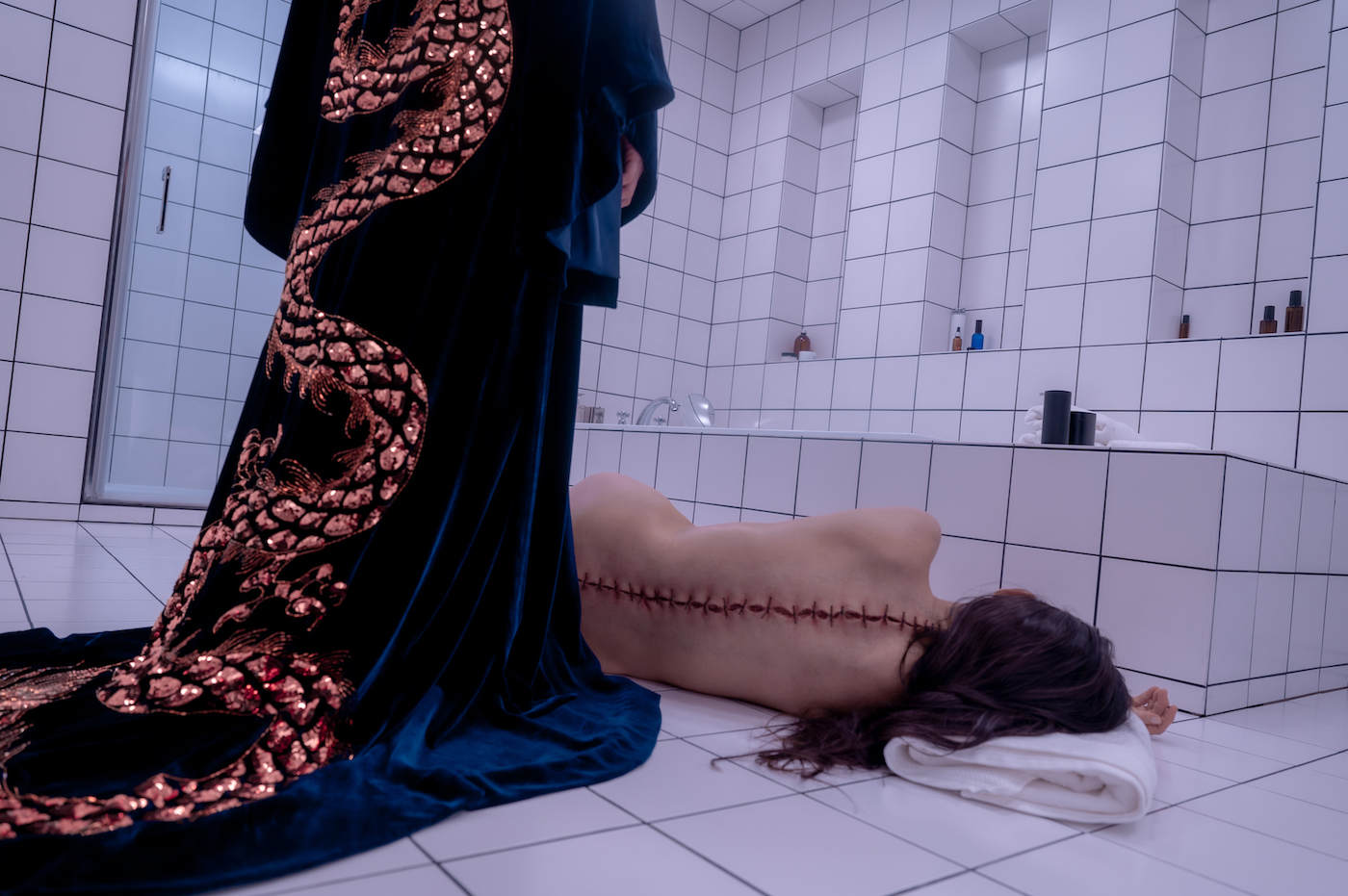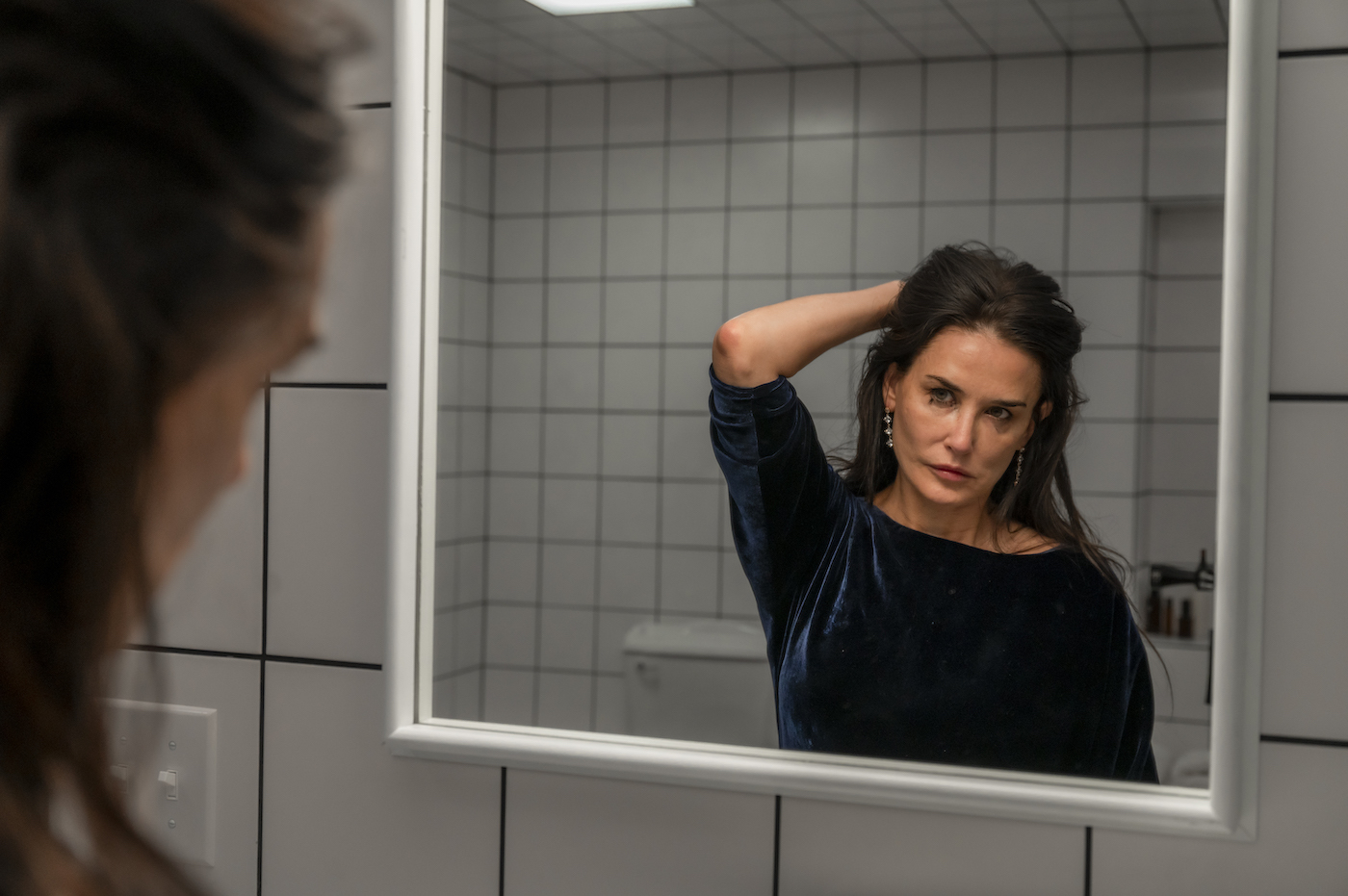“The Substance” And The Search For Human Regeneration
In the new movie, Demi Moore grows an entire clone of herself in just a few minutes. What does actual regenerative medicine look like?
This is an article from our newsletter “Science Goes To The Movies.” To get a story about the science of popular movies and TV in your inbox every month, subscribe here.
This movie makes the work of David Cronenberg, who’s nicknamed the “Baron of Blood,” look subtle. Be warned: “The Substance” is schnasty. (Content warnings include: needles, body horror, gore, surgery, eating disorders, and body dysmorphia.)
“The Substance” chronicles the transformation of Elisabeth Sparkle, an aging actress played by Demi Moore (“Ghost”). Fired as a TV exercise instructor, she tries a secret anti-aging “treatment” that generates a younger clone of her (played by Margaret Qualley, “Maid”) from her own body. To stick around and regain lost fame, the clone saps Elisabeth’s vital fluids through blood-curdling spinal taps, turning Sparkle-the-elder into an increasingly horrifying Dorian Gray-esque hag.

The titular “substance” essentially grows a younger, parasitic version of Elisabeth’s original body. While humans can’t regenerate our limbs, much less a full clone, plenty of animals, including some lizards, fish, and the charismatic axolotl, can. These animals aren’t just the subject of our medical envy—scientists are learning how their super-healing abilities might one day help us heal our own bodies.
Limb regrowth in reptiles sometimes revolves around a special cell mass called a blastema, which forms at the site of an injury and grows into organs or appendages. Blastema cells start out undifferentiated, meaning they don’t have specialized structures or functions. The mechanisms they use to grow into tails, digits, arms, legs, or other body parts aren’t clear, says Dr. Albert Almada, a stem cell biologist who studies muscle regeneration at the University of Southern California.
Blastemas aren’t well understood—Almada calls them “poorly defined” among researchers—and neither are the specific biological factors that trigger limb regrowth. Almada says that one way blastemas form could be from stem cells and supporting cells in neighboring tissues integrating into the blastema, kickstarting new muscle formation. But scientists are still a long way from understanding the mechanisms behind these regenerative processes or if lessons about how our reptilian friends heal could apply to human wounds.
Almada studies how stem cells communicate with blastemas to regenerate skeletal muscle.
“If we can understand how that works we might be able to transfer those regenerative properties to human muscle healing,” he says, pointing out that aiding muscle growth could help patients living with conditions like muscular dystrophy.

Almada is particularly excited about his research in mice on the FOS protein. He calls FOS a “master switch” that turns on stem cells for repair after tissue damage, ultimately helping them migrate, multiply, and differentiate into muscle cells.
In 2021, Almada’s team found that one target gene that FOS helps control is an enzyme called ART1 that’s located on the outside of muscle stem cells. ART1 works in conjunction with a vitamin called NAD that our bodies steadily lose as we age, and together, they’re crucial for muscle recovery and regrowth. When Almada’s team removed ART1 from the healing process, they found that muscle stem cells didn’t activate as effectively.
“We just found a key pathway that we think is leading to the inefficient repair of muscle as we get older,” Almada says, adding that the research is based on mouse models, and more work is needed to leverage it for treatments in humans.
Besides muscle regeneration, researchers worldwide are exploring how animal regeneration can help us understand how to repair and regrow stem cells, the heart, or even the brain. Scientists at the University of Georgia’s Regenerative Bioscience Center (RBC), for example, are researching how some aquatic flatworms can regenerate neurons in their central nervous systems. In another lab at the RBC, researchers have applied regenerative medicine principles to produce a stroke treatment from neural stem cells. The treatment was cleared for clinical trials in early 2024.
Improving healing for patients with traumatic injuries or degenerative diseases is regenerative medicine’s main priority, Almada says. The type of cloning in “The Substance”? Not so much.
“Everybody’s looking for a magic pill that will just make them younger. The best thing you can do for your health is exercise,” he says. “There’s nothing better out there right now for anti-aging.”

This movie brings viewers up close and personal with how inner pain can externalize in gruesome ways. Viewers with misophonia, stay away. For those like myself who love body horror, gore, and decaying divas, get your tickets now.
“The Substance” hits theaters September 20.
Emma Lee Gometz is Science Friday’s Digital Producer of Engagement. She’s a writer and illustrator who loves drawing primates and tending to her coping mechanisms like G-d to the garden of Eden.